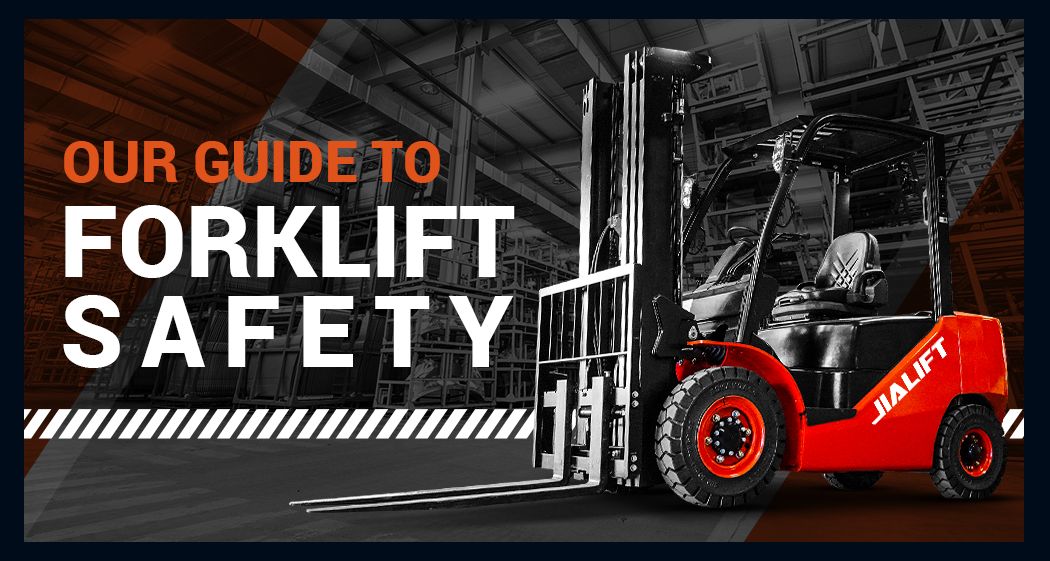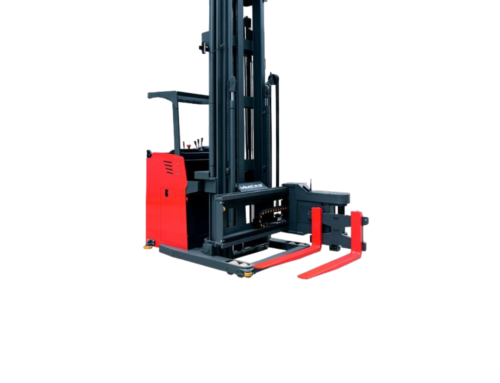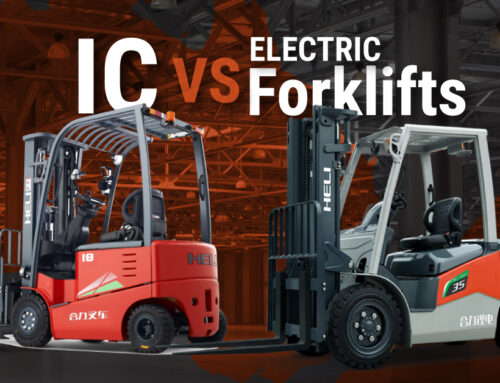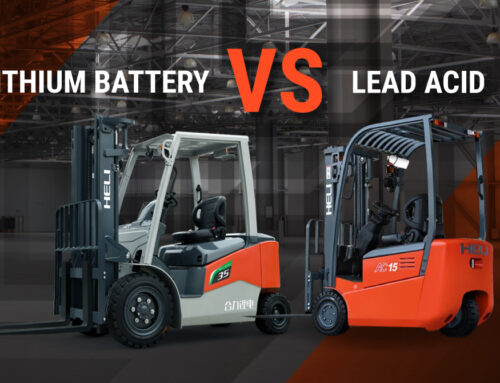At Jialift Australia, we pride ourselves on supplying high quality forklifts and material handling equipment at affordable, factory-direct prices. Our models are equipped with cutting edge safety features, and we value keeping up to date with the latest safety innovations in our industry.
For any person who uses a forklift at their workplace, an understanding of good safety practices is paramount. Read more in regards to how to remain safe as a forklift operator.
Importance of Forklift Safety Systems
Forklifts, while powerful, can be dangerous if not handled correctly. To minimise the risk of accidents and injuries, it’s essential to have a valid forklift license and receive appropriate training, as well as consistently following safe practices while operating the forklift.
What Are The Dangers Of Forklifts?
Forklifts are one of the most commonly used pieces of machinery in many industries, but they can also be one of the most dangerous. Every year, there are thousands of accidents involving forklifts, and many of them are fatal.
There are many dangers associated with forklifts, including:
- Collisions: Forklifts can collide with other vehicles or objects, causing serious damage and injuries.
- Falls: If a forklift tips over, it can fall on top of people nearby, causing crush injuries or even death.
- Injuries from falling loads: If a load falls off a forklift, it can strike and injure anyone in the vicinity.
- Operator error: Many accidents occur because the operator does not have the proper training or experience to operate the forklift safely.
What Are Some Tips For Staying Safe Around Forklifts?
When working with or near forklifts, it’s important to be aware of the potential dangers and take precautions to stay safe. Here are some tips for staying safe around forklifts:
- Be aware of your surroundings at all times, and keep an eye out for other forklifts
- Stay clear of operating areas
- If you must cross an operating area, do so quickly and without stopping
- Never walk or stand under a raised load on a forklift
- Don’t try to catch a ride on a moving forklift
- Keep your clothing and personal belongings clear of the forks and other moving parts on a forklift
- Report any unsafe conditions or behaviours to a supervisor immediately
Other important precautions:
- Thoroughly reading operating instructions of the forklift you intend to operate
- Familiarise yourself with the safety mechanisms on the forklift and how to use them
- Keep an update logbook
- Service your forklift consistently at either the 500 hour or 6 month mark
Current Australian Standards And Legislation For Forklift Safety
All employers in Australia have a duty of care to ensure that their workers are safe from harm while using forklifts in the workplace. In addition, there are various legislation that protects employees when it comes to forklifts.
Australian Code for the Transport of Machinery (ACOP L8)
The Australian Code for the Transport of Machinery (ACOP L8) provides guidance on the safe use of forklifts and other machinery in workplaces.
The code includes requirements for operator training, maintenance and inspection of forklifts, and safe work practices when using them. It also sets out the responsibilities of employers and employees in relation to forklift safety.
National Licensing Standard Guidelines
The National Licensing Standard for forklifts outlines the minimum requirements for those who wish to operate a forklift. The standard is divided into operator qualifications, training, licensing and registration.
- Operators must be at least 18 years old and have a valid driver’s licence.
- They must also complete a certified training program that covers the proper operation of a forklift.
- Once operators have completed their training, they must obtain a licence from the state where they plan to operate their forklift. In most states, this licence can be obtained by passing a written exam and completing a practical skills test.
- Forklifts must also be registered with the state where they will be operated. This registration process typically involves submitting an application and paying a fee.
To read more: How To Get A Forklift License In Australia
Safe Work Australia’s Forklift Guidelines
Safe Work Australia’s forklift guidelines are designed to help ensure the safe operation of forklifts in the workplace. The guidelines cover various topics, including forklift design and construction, operator training and certification, and work site safety. They also include specific requirements for using forklifts in certain industries, such as warehousing and manufacturing.
Some of the key points from these guidelines include ensuring that the forklift is well-maintained, that the operator is properly trained and licensed, and that the workplace is organised to minimise hazards. By following these and other safety precautions, employers can help reduce the risk of injuries and fatalities associated with forklifts.
Can You Leave A Load Suspended On A Forklift?
Yes, you can leave a load suspended on a forklift, but there are some important safety considerations to keep in mind:
- The load must be properly secured to the forks so that it does not shift or fall off
- The forklift must be parked on level ground, and the brakes must be engaged to prevent it from moving
- The load should not be too heavy or too large for the forklift to handle safely
- Always use caution when working around suspended loads, and never stand beneath them
- Ensure the area around the forklift is clear of any obstacles or hazards
- Engage the forklift’s parking brake to help keep the load in place
- Use the straps or chains that are attached to the load to secure it to the forks or mast of the forklift
If you have doubts about your ability to safely suspend a load on a forklift, consult a qualified operator or supervisor.
What Safety Mechanisms Are Built Into Most Forklifts To Keep Operators Safe?
Most modern forklifts are equipped with safety features that help to protect the operator and other workers in the area. These features can include a seatbelt, an overhead guard, and a reversing camera. Some forklifts also have a horn or other warning device to let people know when the lift is in operation.
What To Consider When Working On Different Terrains And Load Sizes When Driving A Forklift
When operating a forklift, it is important to consider the type of terrain you will be driving on and the size and weight of the load you will be carrying.
Terrain
Forklifts come in different types based on the terrain they are designed to drive on. For example, an electric forklift or lithium ion forklift truck may suit your needs if you regularly drive on smooth surfaces such as concrete or asphalt. For example, if you are working on uneven surfaces such as gravel or sand, a rough terrain pallet truck would be a better choice due to its increased stability and traction. Also, if you’re driving through snow or mud, choosing a four-wheel-drive forklift would be ideal.
Load Size
The size of the load should be considered when selecting a forklift. If it is too heavy for one machine to handle, multiple may need to be used in tandem. It is crucial that each machine is rated for the correct capacity and that they are all equipped with safety features such as an overload indicator or tilt alarm system so that operators can tell if they have exceeded their capacity limits and avoid injury or damage to property. Additionally, certain loads may require special attachments, such as booms or buckets, which can increase stability while lifting heavier items.
Finally, always be aware of your surroundings when operating a forklift. Make sure that there is nothing in your path that could cause an accident, and always keep an eye out for pedestrians.
The Importance Of Forklift Operators Maintaining Good Safety Practices
Forklifts are an essential part of many businesses but can also be dangerous. Here are some important safety practices to maintain when operating a forklift:
- Follow the manufacturer’s instructions
- Never overload a forklift beyond it’s load limit
- Ensure materials are secured when loading and unloading
- Take caution when driving, go slowly and keep the load balanced
- Ensure you wear PPE and the correct attire when driving the forklift
- Remain aware of your surroundings
Contact Jialift Australia For High Quality Forklifts With Advanced Safety Features
This guide to forklift safety covers the basics of staying safe when using a forklift, from choosing the right type of forklift for the job, to understanding the risks involved in operating one. Following our simple tips can help ensure that your workplace is safe for everyone. If you are searching for a range of high quality forklifts with advanced safety features, please do not hesitate to contact us.








